Email best practices
12 newsletter signup examples that drive conversions

Email best practices

No matter how you drive traffic to your website, converting fleeting online visitors to more loyal and potentially profitable email subscribers should be a priority for any online marketer. This process starts with having a great email newsletter signup form to capture new contacts.
Despite this, many marketers let potential subscribers slip through the net by deploying less optimized newsletter signup forms. Or worse still, by hiding their subscription forms behind buttons and links that nobody ever clicks on.
If this sounds like a problem you identify with, it’s time to develop your email marketing signup form best practices and create engaging signup forms your website visitors can’t ignore.
An email newsletter signup form is a simple tool for any business or organization to grow its email list and maintain a direct line of communication with its subscribers.
The signup form typically asks for the user’s name, email address, and sometimes additional information such as their interests or location. Newsletter signup forms can be found on websites, social media pages, mobile apps, and other digital platforms. Once a user has signed up, they’re automatically subscribed to your email lists to receive regular emails with news, updates, promotions, or additional information related to the topic of the newsletter.
Attracting visitors to your website is an expensive business. Whether you’re investing in SEO-optimized content, paid search campaigns, sponsored social media posts, or a combination of all three, it can be challenging to generate a positive return on your marketing investment. This problem is particularly true when visitors make multiple visits via these costly acquisition channels.
As a retention marketing technology, email marketing has the highest ROI than any other acquisition channel. As such, it’s the most profitable component of everything else you do to promote your business.
A good signup form will help you:
Further reading: If you’re looking to put together a high-performance newsletter marketing strategy this guide has everything you need – tips, ideas, and best practices. A highly recommended read for both novice and experienced email marketers.
Your email marketing newsletter signup form isn’t just about collecting data.
When deployed with a reputable email marketing service provider, your signup form will also help you ensure that your subscribers are collected in compliance with various regulations including GDPR, CASL, CPRA, and CAN-SPAM.
All of these regulations are built on the concept of permission. As such, every email newsletter signup form must include a permission statement to confirm the subscriber has consented to join your list.
The concept of consent is enhanced by allowing subscribers to confirm their subscriptions via the double opt-in process. The double opt-in process requires a subscriber to click on an acceptance link sent to their inbox before joining the list, proving they have given their permission to receive your regular communications.
Once subscribed, your ESP will provide all the tools you need to manage your subscriptions, including the all-important unsubscribe link on every subsequent email send.
“Good list hygiene might be one of the things everybody forgets about, but it is so key to your success, and it’s something that can easily be done. You’re investing time and money into sending emails, and you want to make sure you’re taking care of the easiest things possible.”

Newsletter signup forms are the very first impression of your brand, and it separates the greats from the merely good. A well-designed form will increase your chances of attracting loyal subscribers. So it’s worth investing some time to create something eye-catching.
Here are some fundamentals for creating great forms:
Want a step-by-step process for how to create an email marketing newsletter? Then take a look at this detailed guide we’ve just finished putting together.
A little creativity goes a long way when embedding your email newsletter signup forms into your website. We’ve compiled 10 examples of email signup forms that really work hard to drive those all-important subscriptions. How could you take these ideas and incorporate them into your own strategy?
Seth Godin knows a thing or two about permission-based marketing. He coined the term. So why wouldn’t you follow Seth’s email marketing best practices? On Seth’s Blog, his subscription form sits proudly at the top left-hand corner of every page. It’s a straightforward approach, but why complicate things?
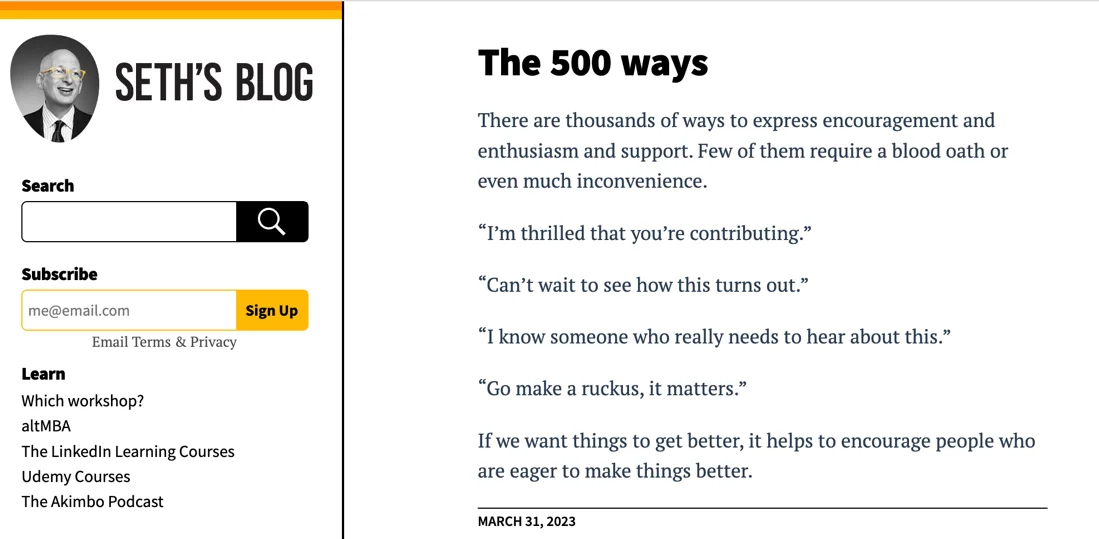
Low-cost supermarket Aldi is famous for its somewhat random middle aisle offers. They know their customers don’t like to miss out on these great savings. The store dedicates considerable space on its homepage because it knows its email newsletters drive considering traffic into its stores with these crazy, but too good-to-miss, opportunities.
Unwilling to miss a single chance to convert a visitor to a subscriber, the store also embeds a simple one-field subscription form at the bottom of every page of its website.
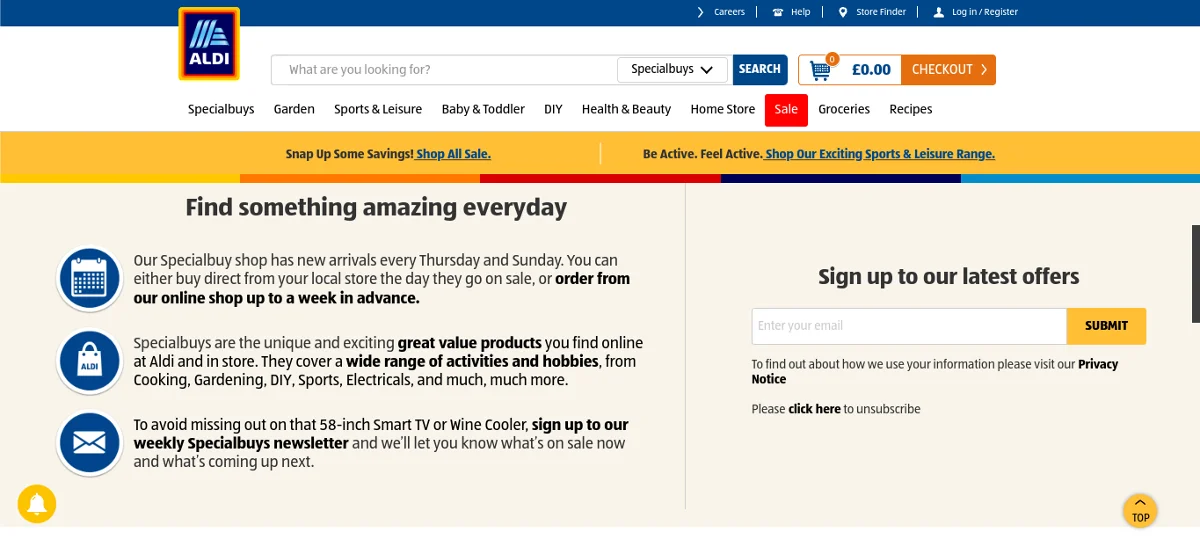
The outdoor clothing company Patagonia has a reputation for caring about more than just its bottom line. Its customers are passionate about the great outdoors and, as a community, would want to support any organizations that share their values.
The keyword here is “community.” Patagonia isn’t building an email list. They are building a community of like-minded individuals. The fact that the community might buy a product or two is a happy coincidence.
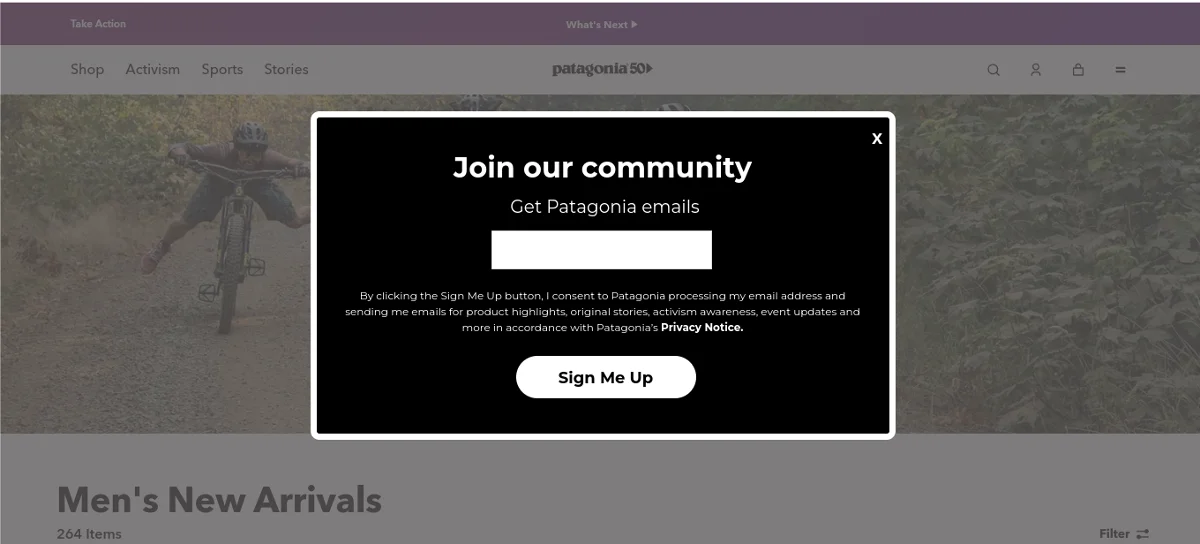
Radiators 4U understands that the customer journey, particularly for a considered purchase like a home heating solution, can be long and convoluted as shoppers visit multiple websites, looking for the best deal.
Therefore, offering your potential clients a small incentive to keep them returning to your site as “hot” leads is a great idea to help keep your business “front of mind” in any competitive market.
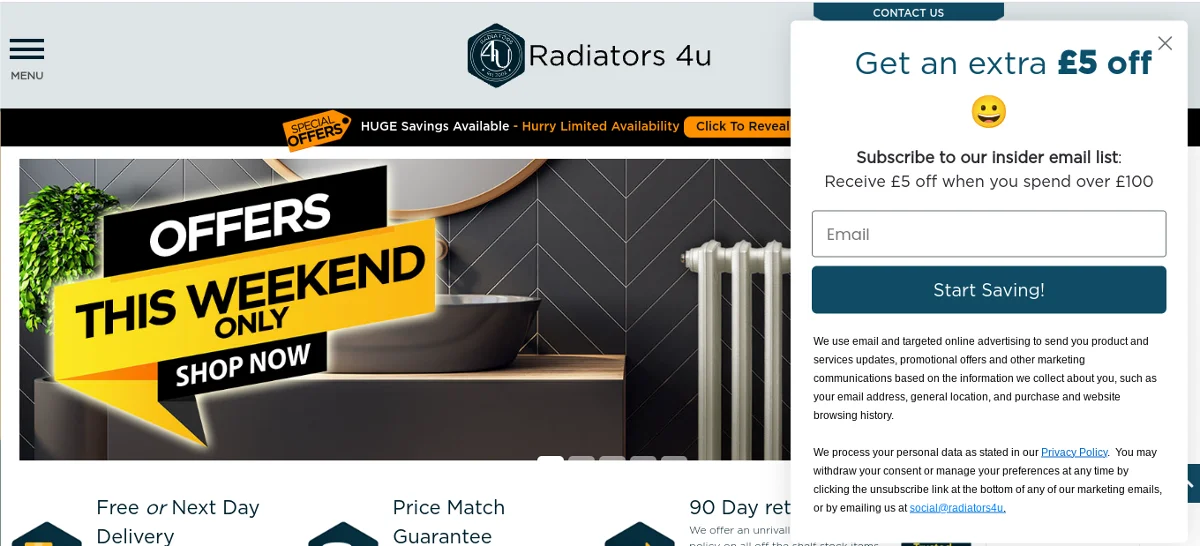
Forget bulk emails. Sometimes your subscribers want to feel like they are a member of an exclusive club. J.Crew’s email campaigns are obviously very exclusive, and if your name is not on the list, you’re not getting in.
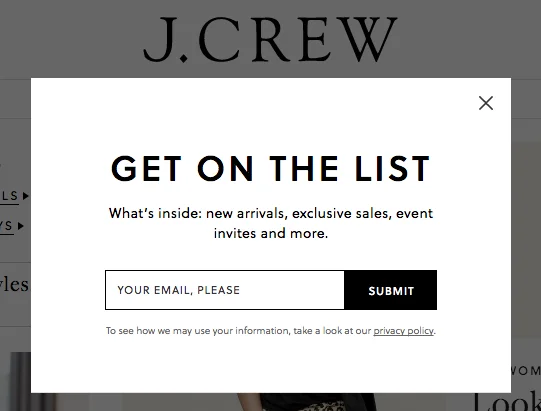
When you sell luxury handbags like Rebecca Minkoff, you already know that your clientele is very demanding and doesn’t like to miss out on anything. However, it never hurts to highlight to your subscribers that the fear of missing out is genuine.
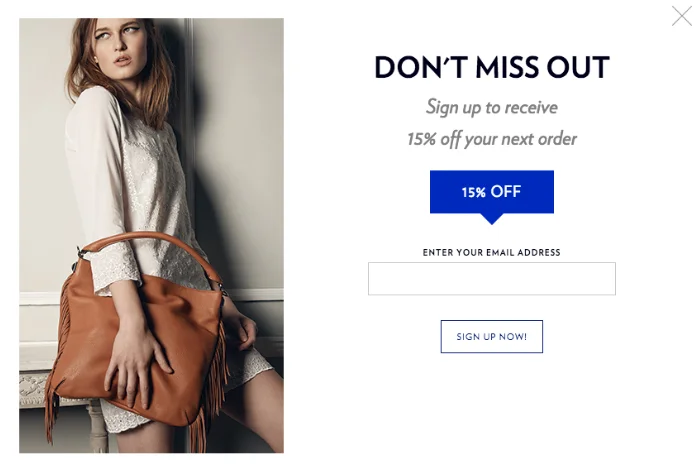
Email marketing is a potent mechanism for the charity and not-for-profit sectors. Despite this, too many organizations need to do a better job promoting their newsletters. They could learn a lot from Habitat for Humanity, which places its newsletter front and center with all its latest news and campaigns.
Obviously, charities and non-profit organizations should prioritize fundraising, but an email subscription is the next best thing.
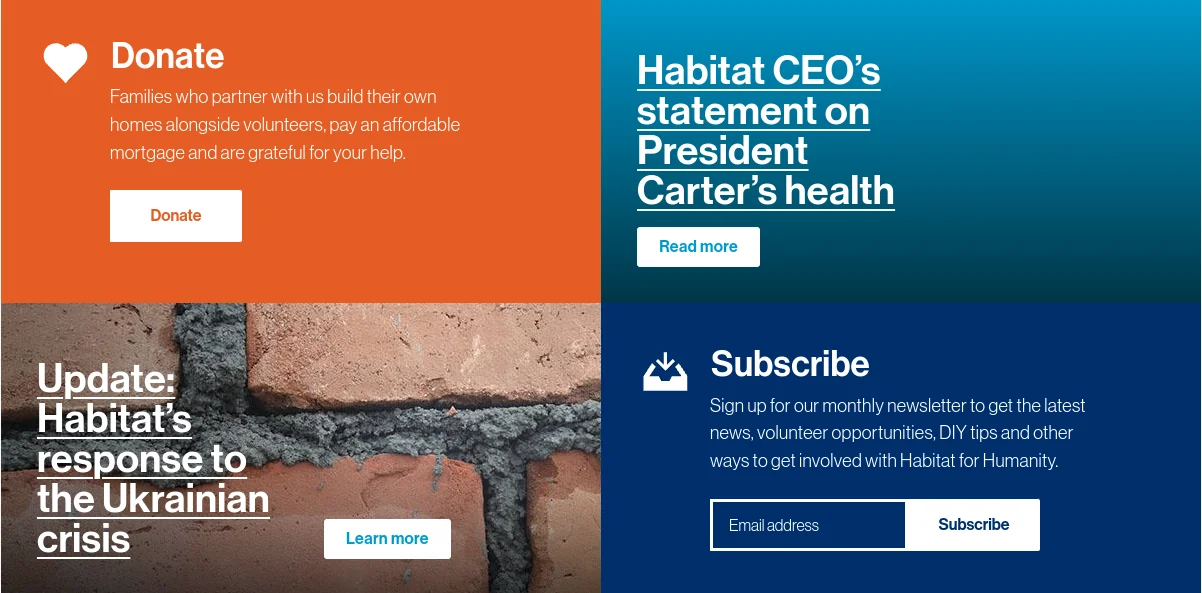
The publishing company Penguin knows that if their customers aren’t reading a book, they are probably speaking about a book. Therefore, turning their email newsletter into a virtual book club with information about their latest titles, book recommendations, and author interviews makes perfect sense.
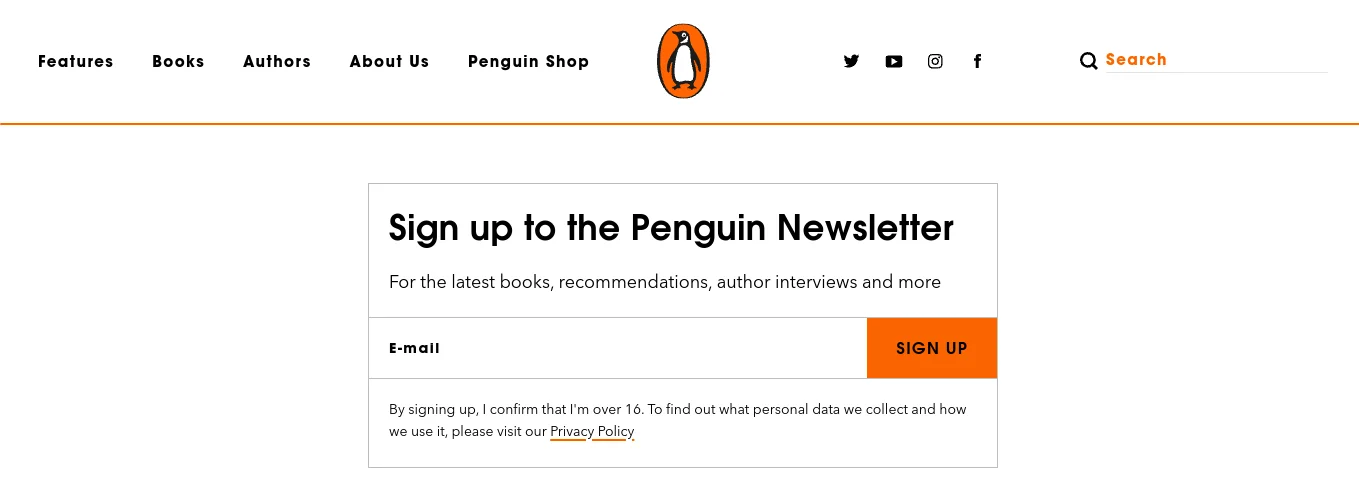
Who isn’t dreaming of a vacation? The budget airline Jet2.com knows that offering a little inspiration and some great deals by email gives people the travel bug. Plus it doesn’t hurt to have a prominent photo like this sunny vista to tip the scales in your favor.

If a vacation isn’t on the cards right now, how about a good night out instead? There is nothing worse than missing out on hot tickets for an event because you were late to the party. Your email subscribers are your most loyal customers, so why not give them a heads-up about your venue’s latest events?
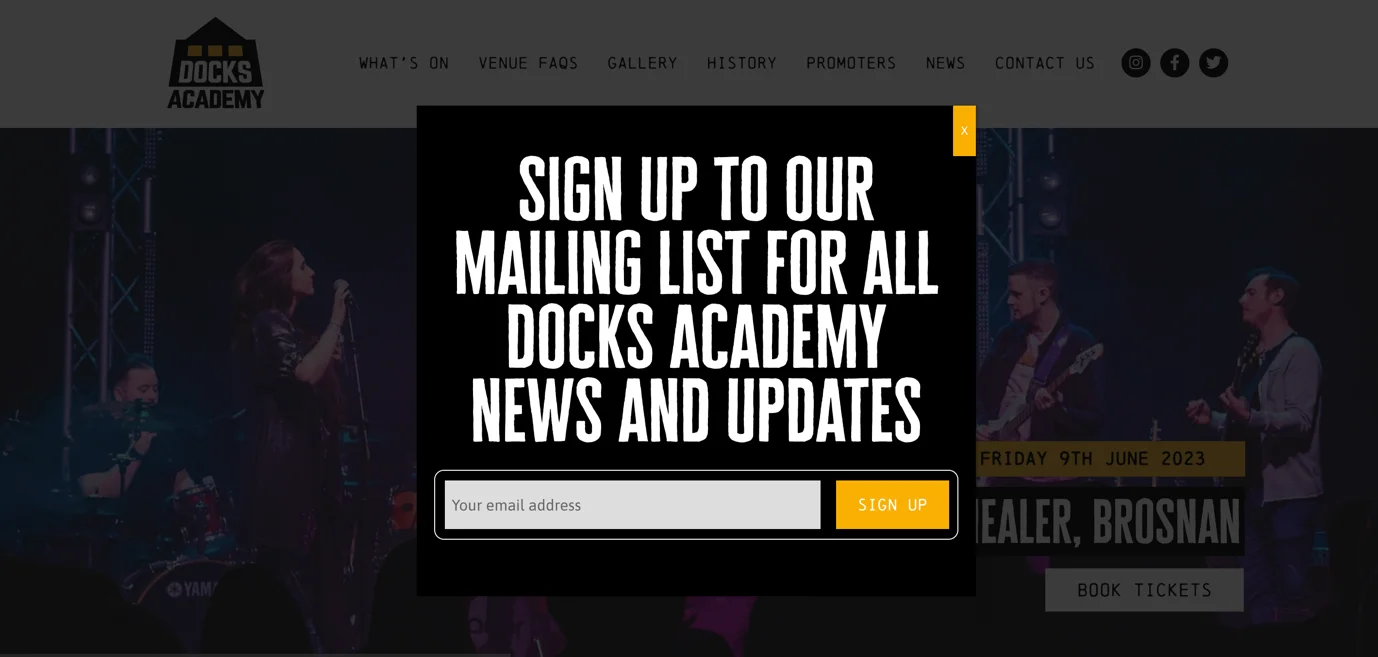
What was that British beer advert that went viral all those years back? John Smith’s, right? While the no-nonsense campaign certainly raised a few laughs from British sofas back in the mid 2000s, it actually made a good point. There’s something to be said about keeping things simple.
This is the approach that Sonar Barcelona took with their newsletter signup form. Want our newsletter? Then just paste your email below – no nonsense.

Offering potential subscribers different newsletter options is kind of like giving them a menu at a good café – why force everyone to drink the same brew when you’ve got a whole list of delicious blends?
If you write about different topics, it makes sense to let people pick what actually tickles their fancy. Maybe someone’s here for the politics? While someone else just wants feel-good animal stories and weird internet finds. It’s respectful, it’s smart, and honestly, it helps you connect with your audience. Letting subscribers choose their flavour means happier readers and fewer unsubscribes – win-win.
Take a look at how the Guardian offers subscribers different newsletters based on their interests:
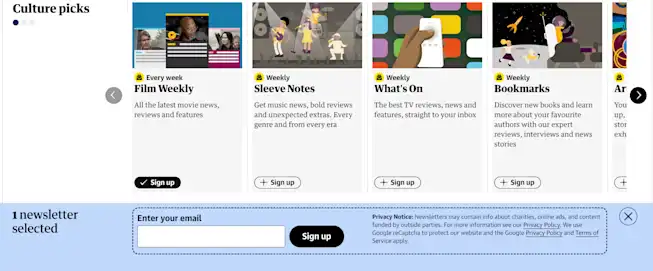
The possibilities are endless when it comes to designing your signup form. The more care and attention you put into the design process, the higher the website conversions you’ll receive.
Mailjet’s Form Builder gives email marketers complete control over their email newsletter signup forms, with absolutely no design or coding skills required. Simply select the required layout and fields, enter your text, and upload your graphics. And Mailjet’s Form Builder will generate the code for the signup form and take care of the workflow.